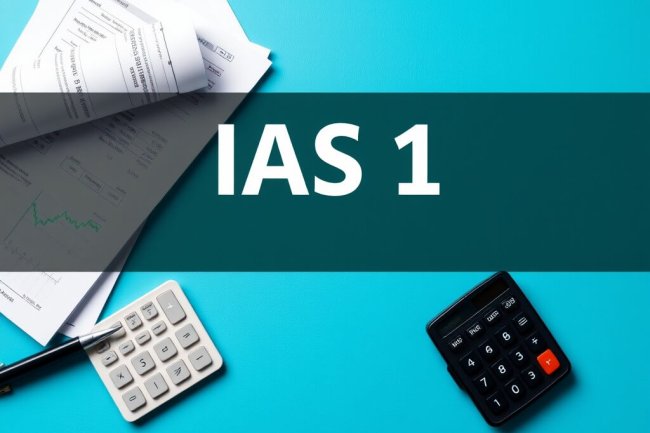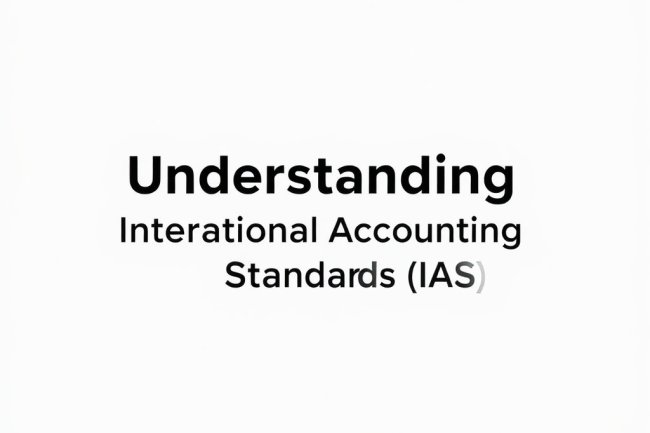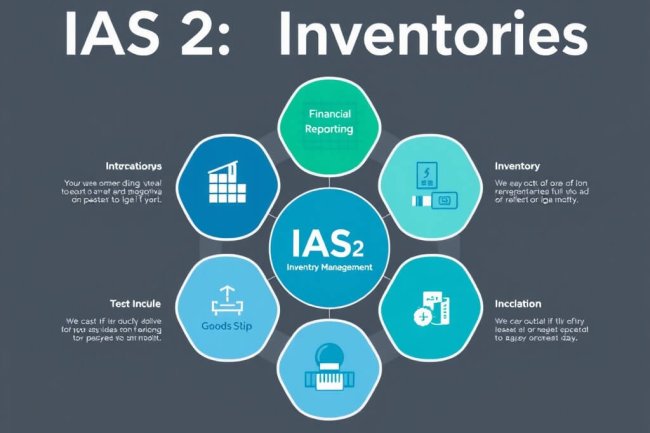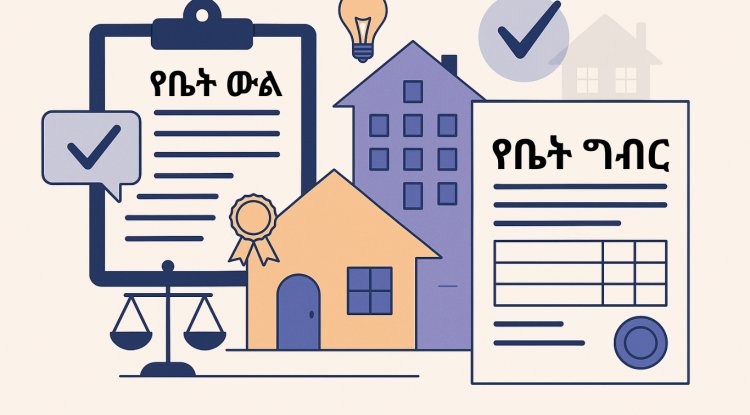IFRS 3: Business Combinations
IFRS 3: Business Combinations is a key accounting standard that governs how companies report the acquisition of control over another business. Key Points: 1) Acquisition Method: Requires identifying the acquirer, determining the acquisition date, and measuring identifiable assets and liabilities. 2) Goodwill Recognition: Outlines how to calculate goodwill, which is the excess of the purchase price over the fair value of net identifiable assets. 3) Disclosure Requirements: Companies must provide detailed information about the nature and financial effects of business combinations. 4) Changes in Control: Addresses accounting for changes in ownership interests to ensure accurate financial reporting. This standard enhances transparency and comparability in financial statements, aiding stakeholders in evaluating business combinations.

Understanding IFRS 3: Business Combinations
Introduction
International Financial Reporting Standard 3 (IFRS 3) is a crucial accounting standard that provides guidance on how companies should account for business combinations. It aims to enhance the relevance, reliability, and comparability of financial information provided to users by setting out the principles for recognizing and measuring the identifiable assets acquired, liabilities assumed, and any non-controlling interest in the acquiree.
Objective of IFRS 3
The primary objective of IFRS 3 is to prescribe the accounting treatment for business combinations. It requires that the acquirer in a business combination:
- Identifies the acquirer.
- Determines the acquisition date.
- Recognizes and measures the identifiable assets acquired, the liabilities assumed, and any non-controlling interest in the acquiree.
- Recognizes and measures goodwill or a gain from a bargain purchase.
Scope of IFRS 3
IFRS 3 applies to all business combinations, regardless of whether they are achieved through the purchase of shares or the purchase of assets. It does not apply to:
- Business combinations between entities or businesses under common control.
- The formation of a joint venture.
Key Definitions
- Business Combination: A transaction or other event in which an acquirer obtains control of one or more businesses.
- Acquirer: The entity that obtains control of the acquiree.
- Acquiree: The business or business activity that is being acquired.
- Goodwill: The excess of the cost of the acquired entity over the fair value of its identifiable net assets at the acquisition date.
- Non-controlling Interest: The equity in a subsidiary not attributable, directly or indirectly, to a parent.
The Acquisition Method
IFRS 3 mandates the use of the acquisition method for accounting for business combinations. This method involves the following steps:
-
Identify the Acquirer: The acquirer is the entity that obtains control over the acquiree. Control is defined as the power to govern the financial and operating policies of an entity to obtain benefits from its activities.
-
Determine the Acquisition Date: The acquisition date is the date on which the acquirer effectively obtains control of the acquiree, typically when the transaction is legally completed.
-
Recognize and Measure the Identifiable Assets and Liabilities:
- The acquirer must recognize the identifiable assets acquired and the liabilities assumed at their fair values on the acquisition date.
- Identifiable assets typically include tangible assets (like property, plant, and equipment), intangible assets (like patents and trademarks), and current assets (like inventories and receivables).
- Liabilities assumed may include long-term debt, accounts payable, and other obligations.
-
Recognize Goodwill or a Gain from a Bargain Purchase:
- Goodwill is recognized when the cost of the combination exceeds the fair value of the identifiable net assets acquired.
- If the fair value of the identifiable net assets exceeds the cost of the combination, the acquirer recognizes a gain from a bargain purchase.
Example of a Business Combination
Scenario
Let's consider a hypothetical example where Company A acquires Company B.
-
Purchase Price: $1,000,000
-
Fair Value of Identifiable Assets of Company B:
- Cash: $100,000
- Inventory: $200,000
- Property, Plant, and Equipment: $500,000
- Intangible Assets (e.g., brand): $300,000
-
Fair Value of Liabilities of Company B:
- Accounts Payable: $150,000
- Long-term Debt: $100,000
Calculation Steps
-
Determine the Fair Value of Net Assets Acquired:
-
Total Identifiable Assets:
- Cash: $100,000
- Inventory: $200,000
- Property, Plant, and Equipment: $500,000
- Intangible Assets: $300,000
- Total Identifiable Assets = $100,000 + $200,000 + $500,000 + $300,000 = $1,100,000
-
Total Liabilities Assumed:
- Accounts Payable: $150,000
- Long-term Debt: $100,000
- Total Liabilities = $150,000 + $100,000 = $250,000
-
Fair Value of Net Identifiable Assets:
- Fair Value of Net Assets = Total Identifiable Assets - Total Liabilities
- Fair Value of Net Assets = $1,100,000 - $250,000 = $850,000
-
-
Determine Goodwill:
- Goodwill = Purchase Price - Fair Value of Net Identifiable Assets
- Goodwill = $1,000,000 - $850,000 = $150,000
Journal Entries
Upon the acquisition, Company A would make the following journal entries:
- To record the acquisition of identifiable assetsCash $100,000
Inventory $200,000
Property, Plant, and Equipment $500,000
Intangible Assets $300,000
Goodwill $150,000
Accounts Payable $150,000
Long-term Debt $100,000
Cash (purchase price paid) $1,000,000 -
Measurement Period
IFRS 3 allows a measurement period of up to one year from the acquisition date. During this period, the acquirer can adjust the provisional amounts recognized for the identifiable assets and liabilities. These adjustments are made to reflect new information obtained about facts and circumstances that existed at the acquisition date.
Disclosure Requirements
IFRS 3 establishes specific disclosure requirements to provide users of financial statements with relevant information about business combinations. These disclosures include:
- The names and descriptions of the acquiree.
- The acquisition date.
- The percentage of voting equity interests acquired.
- The primary reasons for the business combination and a description of how the acquirer obtained control.
- The acquisition-date fair value of the total consideration transferred, along with the fair value of each major class of consideration.
- The recognized amounts of each class of identifiable assets acquired and liabilities assumed.
Impact of IFRS 3 on Financial Reporting
The implementation of IFRS 3 has significant implications for financial reporting:
-
Enhanced Transparency: By requiring detailed disclosures about business combinations, IFRS 3 enhances transparency and helps users of financial statements understand the effects of such transactions.
-
Consistency in Reporting: The standard promotes consistency in the accounting treatment of business combinations across different entities, making it easier for stakeholders to compare financial statements.
-
Recognition of Goodwill: The requirement to recognize goodwill on the balance sheet can significantly affect a company's financial position and performance metrics.
-
Impairment Testing: Goodwill is not amortized but is subject to annual impairment testing, which requires companies to assess the carrying amount of goodwill and recognize an impairment loss if the recoverable amount is less than the carrying amount.
Conclusion
IFRS 3 provides a comprehensive framework for accounting for business combinations, promoting transparency and consistency in financial reporting. By understanding the principles outlined in IFRS 3, businesses can effectively navigate the complexities of mergers and acquisitions, ensuring accurate reporting and compliance with international accounting standards.
Example Calculation Summary
- Purchase Price: $1,000,000
- Total Identifiable Assets: $1,100,000
- Total Liabilities: $250,000
- Fair Value of Net Assets: $850,000
- Goodwill: $150,000
By adhering to IFRS 3, companies can enhance the relevance and reliability of their financial statements, ultimately benefiting stakeholders and investors.













